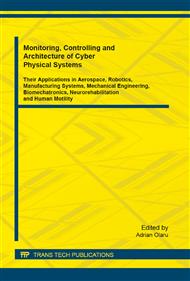p.298
p.305
p.315
p.327
p.335
p.345
p.351
p.360
p.369
Influence of Quality and Accuracy of Sensors to Characterize Surfaces Using Atomic Force Microscopy
Abstract:
This paper explains and demonstrates how an atomic force microscope (AFM) is working and how can be improved the measurements realized with this system. At the begining of the paper is a complex presentation of AFM and its improvement with capacitive sensors. Starting from the obtained information, we studied the influence of quality and linearity error of sensors to characterize surfaces using atomic force microscopy. We used the device that had sensors with a linearity error of 0.1%. For another set of measurements we used sensors with linearity error of 0.01%. Experiments realized on CoCrMo and Ti6Al4V materials surfaces demonstrated that the accuracy of sensors, respectively, the linearity error, from the measurement system has an important influence.
Info:
Periodical:
Pages:
335-344
Citation:
Online since:
October 2014
Authors:
Keywords:
Price:
Сopyright:
© 2014 Trans Tech Publications Ltd. All Rights Reserved
Share:
Citation:


